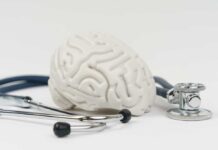
Scientists have discovered that dream recall isn’t merely chance—it reveals the intricate relationship between our subconscious mind and mental health, potentially offering new pathways for diagnosing neurological conditions before symptoms appear.
At a Glance
- Dream recall varies significantly among individuals and is influenced by age, sleep quality, and personal attitudes toward dreams
- REM sleep produces more vivid, perceptual dreams that are easier to remember than those from other sleep stages
- Changes in dream frequency or content may signal early stages of psychiatric and neurological conditions
- Researchers have demonstrated two-way communication with lucid dreamers during sleep
- Improving dream recall may be possible through intentional effort and practice
The Science Behind Dream Memories
Why do some people remember their dreams vividly while others recall nothing at all? This question has fascinated scientists studying the relationship between dreaming and brain function. Research indicates that dream recall isn’t random but reflects complex interactions between sleep patterns, cognitive traits, and personal attitudes. Studies show that people who spend more time in lighter sleep stages and experience more REM (rapid eye movement) sleep typically remember dreams better. This connection makes sense considering that REM sleep produces our most vivid dreaming experiences.
Age also plays a significant role in dream recall. Younger individuals typically remember more dream details than their older counterparts, possibly due to changes in sleep architecture that occur as we age. Seasonal variations have been observed as well, with dream recall reportedly lower during winter months compared to spring. These patterns suggest that both biological factors and environmental influences contribute to our ability to remember these nighttime narratives.
Personal Traits and Dream Memory
Your personal characteristics and daily habits significantly influence dream recall. People who frequently daydream tend to remember more of their nighttime dreams, suggesting a general propensity for spontaneous mental experiences. Those with positive attitudes toward dreams—individuals who find them meaningful or interesting—are also more likely to remember them. This correlation indicates that simply paying attention to dreams and considering them important can enhance recall abilities.
Interestingly, research participants who initially reported poor dream recall showed improvement by the end of studies focused on dreaming. This suggests that intentional effort and practice can enhance dream memory. The simple act of keeping a dream journal or making mental notes upon waking can dramatically increase recall over time, indicating that remembering dreams is partially a learned skill that responds to conscious effort.
Dreams as Windows to Mental Health
Perhaps most intriguingly, dream patterns may offer valuable insights into our mental health. Changes in dream frequency or content could signal early stages of psychiatric or neurological conditions before other symptoms become apparent. During periods of heightened emotional stress, such as the COVID-19 pandemic, many people reported increased dream recall and more vivid or disturbing dreams. This pattern reflects how our emotional state affects our dream experiences and subsequent memory.
Mental health conditions directly impact dream content, with stress and trauma often leading to negative dreams or recurring nightmares. For those suffering from anxiety disorders, cognitive-behavioral therapy can improve sleep quality and reduce nightmare frequency. Future research aims to explore how dream content changes in pathological conditions, potentially aiding in the early diagnosis of conditions like dementia or Alzheimer’s disease before clinical symptoms appear.
Communicating With Dreamers
In a development reminiscent of science fiction, researchers have demonstrated that two-way communication with sleeping individuals is possible. This breakthrough echoes concepts explored in popular culture, as noted by one researcher: “In his sci-fi film Inception, Christopher Nolan imagined his protagonist slipping into other people’s dreams and even shaping their contents.” While not as dramatic as the film portrays, scientists have established that lucid dreamers—people aware they are dreaming—can receive information during sleep and respond using predetermined eye movement patterns.
This communication isn’t limited to lucid dreamers in REM sleep. Experiments have shown responses from non-lucid dreamers and those with narcolepsy across various sleep stages. The research suggests that there are specific moments during sleep when the brain remains receptive to external stimuli, possibly serving an evolutionary function by maintaining some environmental awareness even during rest. These findings open exciting possibilities for understanding consciousness and potentially developing new therapeutic approaches.


















